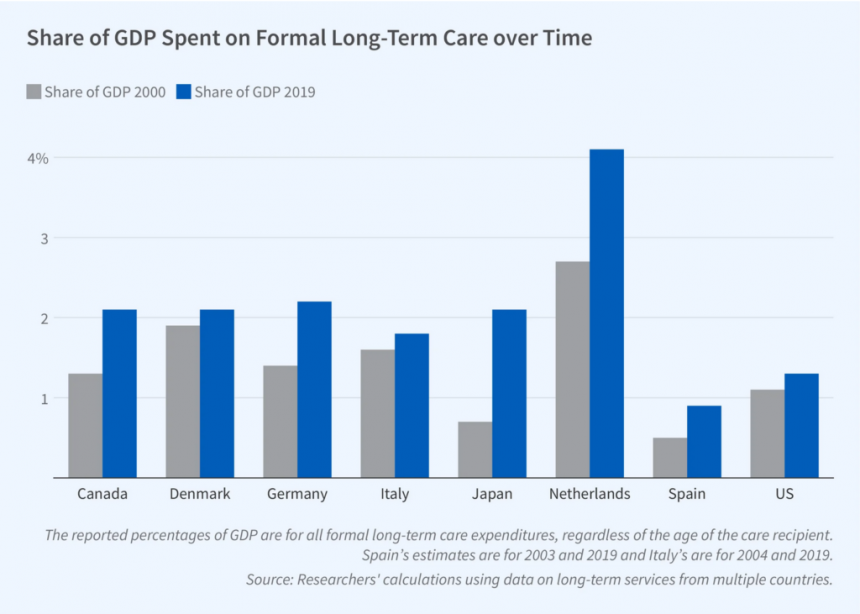In a recent study by Gruber et al. 2023, the evolution of long-term care in ten countries was analyzed: Canada, Denmark, England, Germany, Italy, Japan, the Netherlands, Singapore, Spain, and the United States. Long-term care was categorized into institutional care, formal home care, and informal care. The findings of the study highlighted:
- National spending on LTC: Long-term care spending averages 2.1% of GDP and has increased by 60% as a share of GDP from 2000 to 2019.
- Cost for patients: The cost of long-term care exceeds the financial means of many elderly individuals, with the public sector bearing a significant portion of the cost.
- Spending on formal vs. informal care: The proportion of spending on home care varies among countries, ranging from 23% in Spain to 63% in Japan.
- Cost of informal care: Informal care plays a substantial role in long-term care, and its costs, including foregone wages, should be considered in assessing the true cost of care.
- LTC risk: Long-term care needs increase sharply with age and disability.
- Formal vs. informal care: Most elderly individuals receiving assistance rely on a combination of formal and informal care, with women predominantly providing formal care across all countries.
- Worker wages: Skilled formal caregivers are compensated well, but there is significant variation in wages for low-skilled caregivers across countries.
Results


Data
Various data sets, similar to the HRS model, were used in the study to examine long-term care needs. The sources include:
- US: Health and Retirement Study (HRS)
- Europe: The Survey of Health, Aging, and Retirement in Europe (SHARE)
- UK: English Longitudinal Study of Aging (ELSA)
- Japan: Japan Study of Aging and Retirement (JSTAR)






